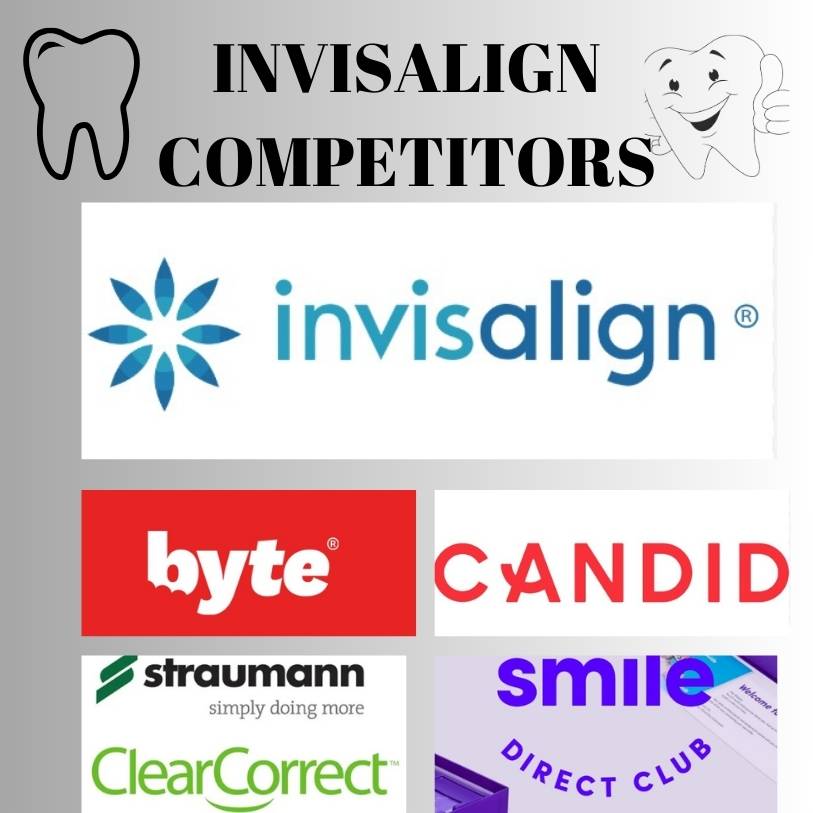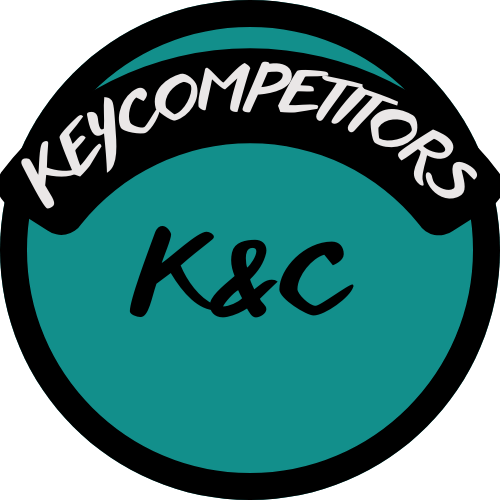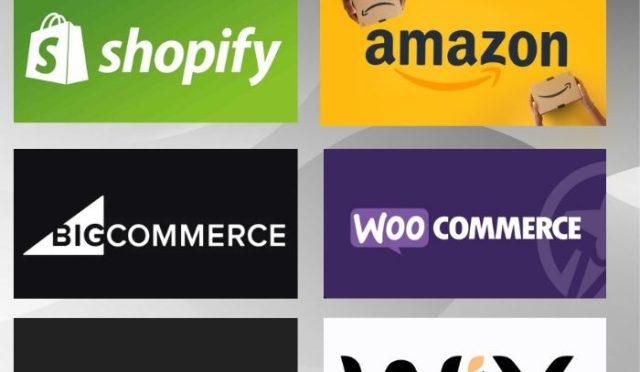Introduction
This comprehensive analysis of Invisalign competitors explores the competitive landscape of clear aligner orthodontic treatments. Align Technology’s Invisalign has been a pioneering and dominant force, but today, several strong competitors have emerged. These competitors include established orthodontic companies, direct-to-consumer aligner brands, and innovative hybrid treatment models. Understanding the pros and cons of these Invisalign alternatives is important for consumers seeking clear aligner treatment and investors tracking the orthodontic market.
Invisalign and The Rise of Clear Aligner Orthodontics
Invisalign revolutionized orthodontics by offering a discreet, removable alternative to traditional braces. Its success spurred the growth of a competitive market, with numerous companies now offering similar clear aligner solutions.
Key Invisalign Competitors
Here’s an overview of the most prominent Invisalign competitors:
Company/Product Overview
| Feature | Invisalign (Align Technology) | SmileDirectClub | Candid | Byte | ClearCorrect (Straumann) |
| Founded | 1997 | 2014 | 2017 | 2017 | 2006 |
| Approach | In-office (orthodontists/dentists) | Direct-to-consumer (remote) | Hybrid (remote monitoring + dentists) | Direct-to-consumer (remote) | In-office (orthodontists/dentists) |
| Distribution | Certified providers | Online, at-home kits | Online, at-home kits + local dentists | Online, at-home kits | Certified providers |
| Complexity | Mild to complex cases | Mild to moderate (historically) | Mild to moderate | Mild to moderate | Mild to complex cases |
| Support | In-person and remote | Remote (historically, now defunct) | Remote with local dentist network | Remote | In-person and remote |
Market Presence and Share (Approximate)
- Invisalign: Dominant market share with an extensive network of providers.
- SmileDirectClub: Historically significant direct-to-consumer provider; faced financial challenges and ceased operations.
- Candid: Growing presence due to its hybrid model combining remote convenience and professional oversight.
- Byte: Strong presence in the direct-to-consumer market segment.
- ClearCorrect: Increasing market share, backed by the reputable dental company Straumann.
Pros and Cons of Invisalign Competitors
Invisalign
- Pros: Established brand, capable of handling complex orthodontic cases, professional in-person supervision.
- Cons: Higher cost, requires regular in-office visits.
SmileDirectClub
- Pros: Historically lower cost, convenient at-home process.
- Cons: Remote-only treatment, limited professional oversight, primarily mild cases, now defunct.
Candid
- Pros: Hybrid model offering remote convenience and professional oversight.
- Cons: Smaller network compared to Invisalign.
Byte
- Pros: Lower cost, fast treatment times, inclusive aftercare.
- Cons: Limited to mild cases, remote-only treatment.
ClearCorrect
- Pros: Professional supervision, capable of handling complex cases.
- Cons: Higher cost, requires in-office visits.
Key Competitive Factors Among Invisalign Competitors
- Treatment Complexity: Capability to handle various orthodontic cases.
- Cost: Affordability and flexible payment options.
- Convenience: Remote versus in-office treatment options.
- Professional Supervision: Access to orthodontists and dentists.
- Customer Support: Availability, responsiveness, and quality of service.
- Technology: Innovations in aligner design and digital treatment planning.
Consumer Preferences in Choosing Invisalign Competitors
- Cost-consciousness: Direct-to-consumer options appeal to budget-minded individuals.
- Convenience-seekers: Remote treatments offer significant time savings.
- Safety and Supervision: In-office treatments provide reassurance and professional guidance.
- Treatment Complexity: Individuals with complex orthodontic needs typically seek professional, in-person care.
Important Considerations
- Individuals considering clear aligner therapy should always have an in-person consultation with a professional orthodontist.
- Direct-to-consumer models carry inherent risks and are generally limited to mild orthodontic cases.
Visual Comparison Chart of Invisalign Competitors
Here’s a visual chart comparing key factors such as cost, treatment complexity, convenience, and professional supervision among Invisalign and its competitors:

Conclusion
The clear aligner market offers diverse options catering to different needs and preferences. While Invisalign remains a leading brand, direct-to-consumer and hybrid models among Invisalign competitors continue to gain traction. Choosing the right clear aligner treatment requires careful consideration of key factors, including cost, convenience, treatment complexity, and professional supervision.
FAQ about Invisalign Competitors
Who are the main Invisalign competitors?
The primary Invisalign competitors include SmileDirectClub (now defunct), Candid, Byte, and ClearCorrect. These companies offer similar clear aligner treatments but differ in treatment approach, complexity, cost, and professional supervision.

How do Invisalign competitors differ from Invisalign?
Invisalign typically offers in-office treatments supervised by orthodontists or dentists, capable of handling mild to complex cases. In contrast, many Invisalign competitors, like Byte and Candid, offer direct-to-consumer or hybrid models that primarily handle mild to moderate cases remotely, often at a lower cost.
Are Invisalign competitors cheaper than Invisalign?
Yes, many Invisalign competitors, particularly direct-to-consumer brands like Byte and historically SmileDirectClub, offer treatments at lower prices due to fewer in-person visits and remote consultations. However, lower costs usually correlate with limited case complexity and less direct professional oversight.
Can Invisalign competitors treat complex orthodontic cases?
Most direct-to-consumer Invisalign competitors, such as Byte, primarily handle mild to moderate cases. However, competitors like ClearCorrect offer professional supervision similar to Invisalign and can manage more complex orthodontic issues.
What are the risks associated with direct-to-consumer Invisalign competitors?
Direct-to-consumer clear aligner treatments involve inherent risks due to limited professional oversight. Potential risks include improper alignment, inadequate correction, dental health complications, and the need for additional orthodontic treatment afterward.
Why did SmileDirectClub cease operations?
SmileDirectClub faced significant financial and regulatory challenges, leading to its closure. Issues included concerns about patient safety, limited professional oversight, and legal disputes within the orthodontic community.
How does Candid’s hybrid model compare to other Invisalign competitors?
Candid’s hybrid model combines remote convenience with professional oversight through a network of partner orthodontists and dentists. This approach offers a balance between affordability, convenience, and safety, distinguishing it from purely remote or purely in-office Invisalign competitors.
Is professional supervision necessary when choosing Invisalign competitors?
Professional supervision is highly recommended, especially for moderate to complex orthodontic cases. Invisalign and ClearCorrect offer consistent professional oversight, while direct-to-consumer brands typically provide limited or remote supervision, suitable mostly for mild cases.
What factors should I consider when choosing between Invisalign competitors?
When evaluating Invisalign competitors, consider factors such as:
- Treatment complexity (mild, moderate, complex)
- Cost and payment options
- Convenience (remote vs. in-office visits)
- Professional supervision and safety
- Customer support quality and responsiveness
- Technological innovations and aligner design
Can I switch from an Invisalign competitor to Invisalign if I’m not satisfied?
Yes, it’s generally possible to switch from another clear aligner brand to Invisalign if treatment results are unsatisfactory. However, switching treatments may incur additional costs and treatment time. It’s advisable to consult a professional orthodontist before making such decisions. If you liked this review, you can also review our article on trending posts here.

